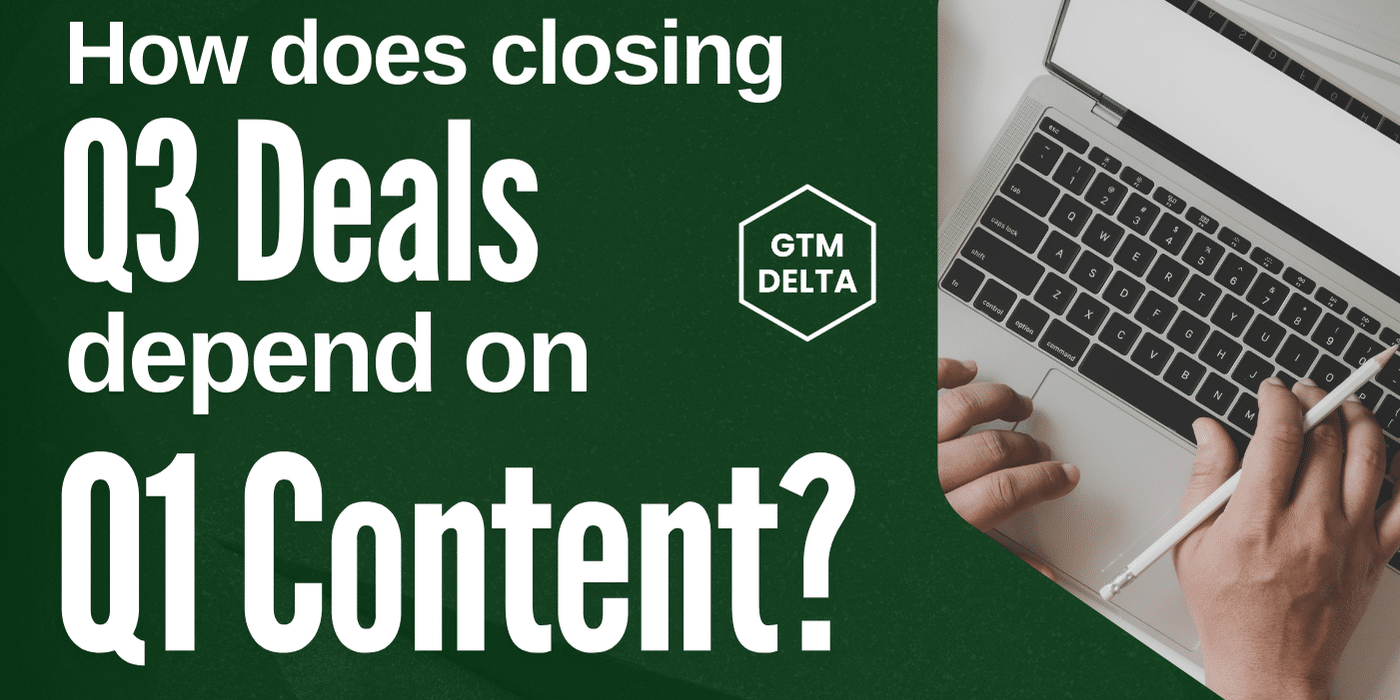Your sales team needs pipeline, and they’re looking at you. But here’s the challenge: the deals your team wants to close in Q3 don’t start with outreach in June. They start now—with content. Content that doesn’t just talk about your product but answers the exact questions your future customers are Googling today.
Think about it: the average B2B sales cycle takes 6 to 9 months, and buyers need multiple trust-building touches before they’re ready to engage. If you’re not creating resources that meet them where they are—searching for solutions, exploring options—you’re leaving money on the table. By the time Q2 rolls around, it’ll be too late to influence the buying journey. So, how do you solve this? You start with a content-first strategy.
Let’s paint a picture. Imagine Ariel, a DevOps engineer, struggling with a gnarly migration issue. Their team is moving from Terraform to OpenTofu, and they’re tasked with converting dozens of scripts—something they’ve never done before. Frustrated and short on time, Ariel types into Google:
“How do I convert a script from Terraform to OpenTofu?”
It’s a simple question, but it kicks off a series of events that transforms Ariel from a casual Googler into a paying customer by Q3. Here’s how it unfolds—and why your content strategy needs to be ready to capture moments like this.
Step 1: The First Search
Ariel lands on your blog post, titled: “5 Steps to Seamlessly Migrate from Terraform to OpenTofu.” The post is well-written, actionable, and—most importantly—optimized for the exact search terms Ariel used. As they read, they notice the blog isn’t just solving their immediate problem; it’s introducing your product as a tool that simplifies OpenTofu migrations.
The post ends with a subtle CTA: “Download our OpenTofu Migration Playbook for more tips and tools.” Intrigued but not ready to commit, Ariel bookmarks the page and moves on.
Step 2: The Second Encounter
A couple of days later, Ariel runs into a new challenge: “How do I manage state files in OpenTofu?” This time, they search again, and guess what? Your content appears in the top results—thanks to smart SEO work and a well-targeted cluster of blog posts around OpenTofu topics.
Ariel clicks through to another blog: “Managing State Files in OpenTofu: A Beginner’s Guide.” This post is just as helpful as the first and reinforces your brand as a trusted resource. Ariel notices an interlink at the bottom of the page: “Thinking about migrating? Read this case study.”
Curiosity piqued, they click again.
Step 3: The Magic of the Algorithm
Now that Ariel has engaged with your site multiple times, Google’s algorithm starts to associate your brand with OpenTofu migration. Ariel begins to see your remarketing ads on LinkedIn and Twitter. These ads aren’t generic—they highlight the exact problem they’re trying to solve.
One ad promotes your free webinar: “Mastering OpenTofu: Best Practices for Migration and Beyond.” Ariel registers and attends. During the Q&A, they ask a question about scaling OpenTofu clusters, and your presenter responds in detail, offering to send over additional resources.
By now, Ariel doesn’t just know your brand—they trust it.
Step 4: Content to Contact
The next week, Ariel receives a follow-up email: “Hi Ariel, here’s the scaling guide we mentioned during the webinar. Let us know if you’d like to chat more about optimizing OpenTofu for your team.”
Ariel clicks the link to download the guide, triggering a sales alert in your CRM. A BDR reaches out with a friendly, no-pressure email: “Hi Ariel, I saw you’ve been checking out our OpenTofu resources. Want to hop on a quick call to see how we can help?”
Ariel agrees, and the call uncovers a deeper issue: their team is overwhelmed with manual migrations. Your sales rep suggests a discovery call with a solutions architect to explore how your platform could automate the process.
Step 5: The Long Game Wins
Fast-forward to August. Ariel’s company sends them to a tech conference, where they spot your booth. By now, your brand is familiar, and the in-person connection feels like catching up with an old friend. Ariel chats with your team, grabs some swag, and signs up for a free trial on the spot.
Over the next few weeks, the trial proves invaluable. Your team provides stellar support, and Ariel’s boss is impressed by the time savings. By September, the deal is closed, and you’ve hit your Q3 pipeline target.
Why It All Started with Content
Notice how this journey began. Ariel wasn’t searching for a product—Ariel was searching for answers. Your content didn’t try to sell them; it met them where they were, solving their problems and building trust with every interaction.
Here’s what made the difference:
- SEO for Intent: You anticipated the exact questions your ICP would ask and created high-quality content to answer them.
- Multi-Touch Marketing: From blogs to ads to webinars, each touchpoint reinforced your expertise and value.
- Relationship-Building at Scale: By the time your sales team connected with Ariel, the relationship was already half-built, making the sales process faster and smoother.
The Takeaway for CMOs and Sales Leaders
Your Q3 pipeline doesn’t start in Q2—it starts now. Every blog post, every webinar, every resource you create in Q1 lays the foundation for meaningful, trust-based relationships with your ICP. By the time you meet your prospects at events or hop on a discovery call, they’re not strangers—they’re warm leads with a history of positive interactions with your brand.
So, don’t wait. Start creating the content your future customers are searching for. Because winning deals in Q3 doesn’t happen by accident—it happens because you made the investment in Q1.

